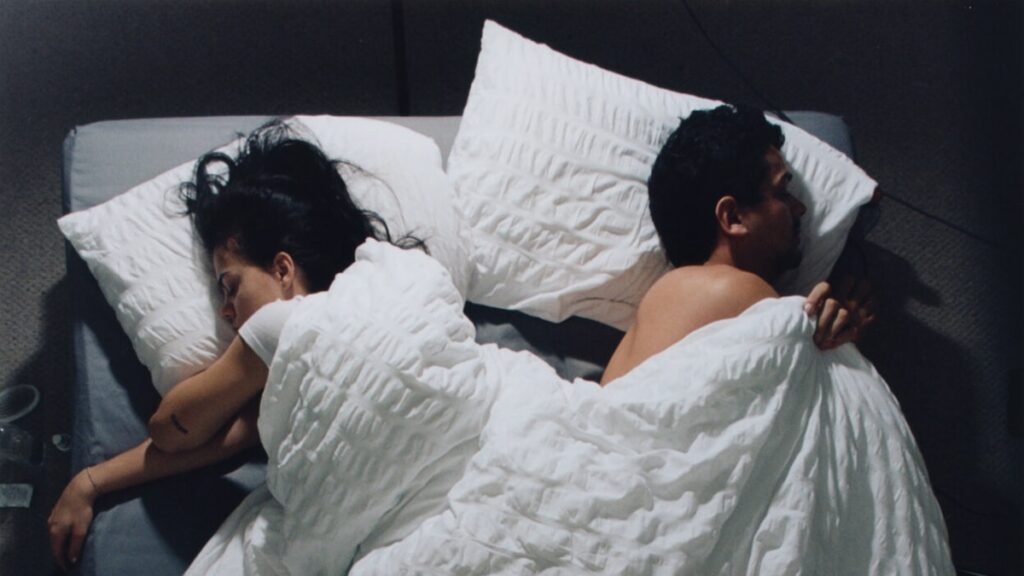New research from the American Academy of Sleep Medicine reveals that more than a third of Americans choose to “sleep divorce” their partners, reflecting a growing trend among couples, including celebrities such as Cameron Diaz and Carson Daly, to prioritize sleep quality.
“We’ve been conned by the idea we should sleep together if we’re in a relationship,” says Neil Stanley, coauthor of A Sleep Divorce: How to Sleep Apart, Not Fall Apart.
Common nighttime disturbances, including snoring, insomnia, differing sleep schedules, and restlessness, can significantly impact both individual sleep quality and the dynamics of a relationship.
Sleep divorce involves couples sleeping in separate beds or bedrooms to improve sleep quality. This practice helps avoid common sleep disturbances like snoring, insomnia, differing sleep schedules, and restlessness, which can lead to fatigue and relationship tension. Here’s what you need to know about the trend and its potential benefits for your health.
The fall and rise of separate beds
In ancient Rome, the concept of the marital bed, known as “lectus genialis,” was both practical and symbolic. Roman couples often used one bed for intimate conversations and physical intimacy, making it a private space within the home. It was not unusual for them to retire to separate beds when it was time to sleep.
(These are the mysteries that science is unlocking about sleep.)
However, during the medieval period, the concept of a dedicated marital bed was less distinct due to the communal nature of living spaces. More impoverished families often shared one bed or sleeping area near a heat source, while wealthier families could claim individual rooms since they lived in larger homes.
The Renaissance saw the emergence of more private sleeping quarters for couples. However, separate bedrooms for husbands and wives, especially among royalty and the nobility, were not uncommon, as depicted in the TV series The Crown and Bridgerton.
To make sleep divorce work effectively, experts recommend personalizing the separate sleeping space to make it feel like one’s own, with preferred mattresses, bedding, and decor.
It became fashionable for couples to sleep together in the Victorian era, but by the late 19th century, medical experts called for a separation once more. In her book, A Cultural History of Twin Beds, Hilary Hinds says that medical professionals of the time considered separate beds the healthiest option. Prominent figures like New York physician William Witty Hall and alternative health practitioner Edwin Bowers emphasized the health benefits of single beds, with Hall advocating for “a single bed in a large, clean, light room” and Bowers arguing that “separate beds for every sleeper are as necessary as separate dishes for every eater.”
(Here are seven science-backed tips for better sleep.)
By the 1920s, twin beds became a symbol of wealth and fashion. However, the 1950s saw a shift back to double beds, as the post-World War II era solidified the master bedroom concept, viewing separate beds as a sign of a failing marriage. Today, as awareness of sleep’s role in overall health grows, the trend of separate sleeping arrangements is making a comeback.
Tips to navigate a “sleep divorce”
Some couples find that sharing a bed enhances their emotional connection and intimacy. For others, not so much.
Sleep psychologist Dan Ford, the clinical director of the Better Sleep Clinic in New Zealand, says there are an array of reasons couples might feel more comfortable sleeping alone. Your partner could snore, or they could suffer, as one in 10 people do, from chronic insomnia. “Some couples have very different body clocks, leading to different sleep timing preferences, so they find it is easier to sleep in separate beds rather than disturb one another,” Ford says.
A study from the University of Michigan found that sharing a bed can compromise sleep quality, potentially straining relationships. Researchers at the University of California, Berkeley, found that following a poor night’s sleep, couples will experience more fights.
(Are you a lark or an owl? Your body clock holds the answer.)
Tami Shadduck, a teacher from the United States, had many sleepless nights due to her husband’s sleep apnoea. She moved into another room during the pandemic when she had strep throat and never moved back. “Sleep is sleep, and intimacy isn’t built while you’re unconscious,” she says. “Intimacy is created in a million little moments while you are awake.”
Many couples report better sleep quality when sharing a bed. The sense of security and comfort derived from sleeping next to a loved one can promote relaxation and deeper sleep.
Stanley says the key to making sleep divorce work is you shouldn’t call the second room the spare room. “It should be your room,” says Stanley. “You have it the decorated the way you want with the mattress, duvet, and pillows you want.”
While a sleep divorce can improve sleep quality and reduce disturbances, for some couples, it may cause feelings of emotional disconnection and reduce spontaneous intimacy.
(Women are more likely to be sleep deprived. Here’s why that’s so bad.)
Yet, for others, separate rooms can boost a relationship. When Utah-based author Marcella Hill moved into her own room a year ago, she said on TikTok, “It’s pretty sexy to be able to invite each other over. I think this should be the new norm.”
Stanley says that sleeping separately has nothing to do with the strength of your relationship. “It is a perfectly normal thing to do,” he says. “Sleep divorce isn’t a punishment, it is doing the best for each other.”
>>> Read full article>>>
Copyright for syndicated content belongs to the linked Source : National Geographic – https://www.nationalgeographic.com/history/article/sleep-divorce-health-benefits
